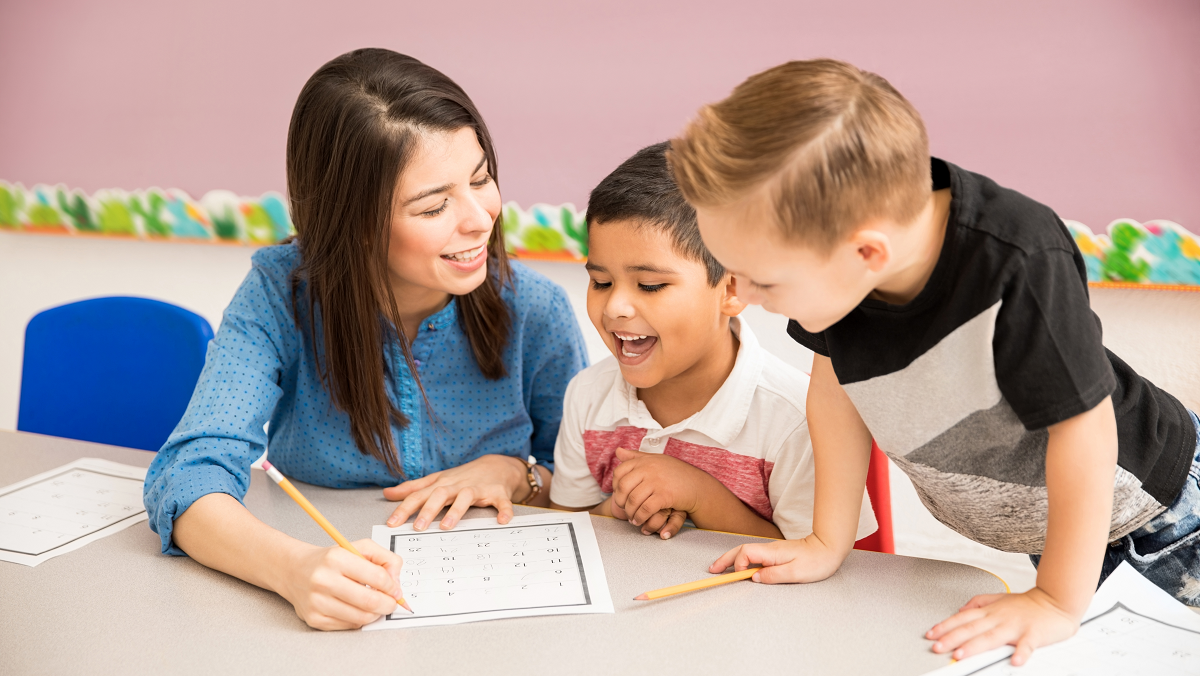Educators worldwide face the challenge of assessing students effectively. The shift to remote learning during the COVID-19 pandemic highlighted the need for interactive assessments to keep students engaged, whether in-person or online. For instance, interactive displays became valuable tools for remote learning and adhering to social distancing guidelines when students returned to in-class instruction. Digital display solutions enabled collaborative learning, firmly establishing interactive assessments as a modern educational foundation.
Empowering Education: Interactive Assessments and Innovative Tools
Topics: Education Technology, classroom assessment, tips for teachers, learning resources, formative assessment, interactive displays
Equitable Assessments: 10 Steps to Empowering Every Student's Success
As educators, the beginning of a new school year brings with it a profound responsibility: Designing and facilitating assessments that honor each student's unique strengths and needs. Inclusive assessment preparation isn't just a task - it's a fundamental commitment to fostering equitable learning environments. What are some essential steps to create assessments that accommodate diverse abilities, including students with hearing loss, varying English language levels, and Individualized Education Plans?
Topics: classroom assessment, tips for teachers, formative assessment, Equity
Assessment isn’t a new idea or one limited to teaching. We assess daily – What is it that I like about this TV show and should I watch it again? What criteria will I look for in my next sofa purchase? What is my diet goal and how will I check my progress in meeting that goal? Learners of all ages are regularly assessing things like clothes, games, movies, even social media platforms according to a set of criteria.
Topics: classroom assessment, distance learning, distance teaching, blended learning, formative assessment, distance education
I realize this subject might make your skin crawl—sometimes we teachers feel like all we do is test, test, test. I recently read an article from USA Today stating that despite all our efforts with Common Core and standardized testing, the US is still lagging behind in test scores. However, I think what’s missing is how to use that data to guide our instruction and how to involve our students with the process.
As the winter testing window begins to open, here are a few tips for your classroom practice:
Topics: classroom assessment
Teachers who are blessed with an assortment of technology in their classroom probably use it often—we are more likely to use something if it is readily available to us. But like any new tool, as we start to gain expertise and comfort with it, we use it more and more. And as we settle into a pattern of use with the technology, we probably feel as though it would be hard to live without.
But even if this is the case and usage is very high, teachers may find themselves in a groove, maybe even a rut, when it comes to how they use technology in their classroom. We limit ourselves to using the tool in ways that we already know and think less about the ways that we could be using it.
Topics: classroom assessment, Whole-Class, tips for teachers
Guiding Teachers Through Standards-Based Grading (Part Two)
Topics: classroom assessment, tips for teachers
Guiding Teachers Through Standards-Based Grading (Part One)
If you are a teacher, school, or district implementing standards-based grading, you might be finding how many decisions there are to make in the process. From the wording and scale to assessing and the parent report, there are many, many details to consider. I have found that even for some schools that have been using SBG for years, these considerations might be worth thinking about. For me, grading and grades demonstrate a philosophy about what school and learning is all about. The way we grade students can change the way students and teachers see learning, therefore it is essential to really think through all the ins and outs of a grading system.
Topics: classroom assessment
Your child comes home from school and on their paper is a single number: 9. Should you punish or reward them? Call the teacher? Call a tutor?
The answer is pretty obvious: we don’t know. A single number doesn’t really make any sense without having some context. Was it 9 out of 10 or 9 out of 100? Was it a score for points or a score from a rubric? We need more information to know what the number actually means.
The next questions for the teacher and the student are “How does this impact grading?” and “What do the numbers even mean when it comes to the grade?” Again, a number with no context doesn’t mean much. But in order to create meaning from this number, we need to start with what the number actually means once it is turned into a grade.
Topics: classroom assessment, tips for teachers
In most schools, we have plenty of data. It is usually assumed that more data means better outcomes for students. This very well could be true, but I believe most schools are DRIP (Data Rich, Information Poor) schools. We have the data, but what does any of it mean? Using data helps us to guide both learning and instruction, but it has to have context. Teachers must know how to reference the data and how to form context around it.
Collecting the data is the easy part. Assessments abound all around us, and we layer benchmarks on top of formatives on top of summatives on top of progress monitoring—not to mention classroom assessments. It takes a great deal of time and resources to administer all of this, but unless these numbers turn into action, it becomes a giant waste.
Topics: classroom assessment
I see your eyes rolling right now as you look at this title. I know what you are thinking: Too many tests! I agree that there is too much testing in our schools, but assessments don’t have to always come in the form of paper and pencil.
As educators, we have a curriculum to teach and standards students need to master—assessments are a necessary part of the process. Depending on what grade level you teach and the district in which you work, standardized and common assessments might be a mandated part of your students’ experience. Just grin and bear it, people. It is part of the job!
Topics: classroom assessment











